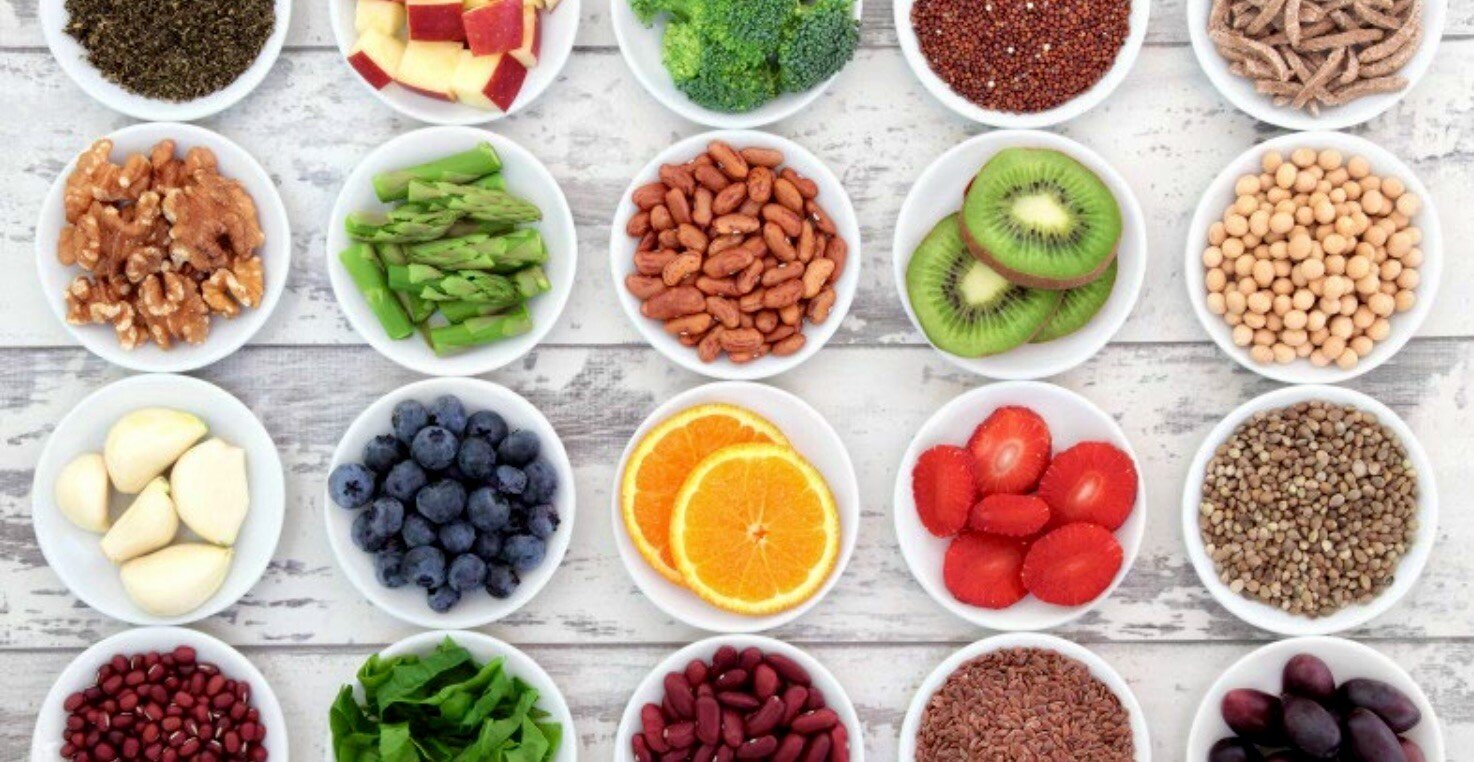10 Superfoods to Boost a Healthy Diet
No single food — not even a superfood — can offer all the nutrition, health benefits, and energy we need to nourish ourselves. The 2020–2025 US Dietary Guidelines recommend healthy eating patterns, "combining healthy choices from all food groups — while paying attention to calorie limits."
Over the years, research has shown that healthy dietary patterns can reduce the risk of high blood pressure, heart disease, diabetes, and certain cancers. Dietary patterns such as the DASH (Dietary Approaches to Stop Hypertension) diet and the Mediterranean diet, which are mostly plant-based, have demonstrated significant health benefits and reduced chronic disease.
However, a few foods can be singled out for special recognition. These "superfoods" offer some important nutrients that can power-pack your meals and snacks, and further enhance a healthy eating pattern.
Superfoods list
Berries. High in fiber, berries are naturally sweet, and their rich colors mean they are high in antioxidants and disease-fighting nutrients.
How to include them: When berries are not in season, buy them frozen. Add to yogurt, cereals, and smoothies, or eat plain for a snack.
Fish. Fish can be a good source of protein and omega-3 fatty acids, which help prevent heart disease.
How to include it: Buy fresh, frozen, or canned fish. Fish with the highest omega-3 content are salmon, tuna steaks, mackerel, herring, trout, anchovies, and sardines.
Leafy greens. Dark, leafy greens are a good source of vitamin A, vitamin C, and calcium, as well as several phytochemicals (chemicals made by plants that have a positive effect on your health). They also add fiber to the diet.
How to include them: Try varieties such as spinach, swiss chard, kale, collard greens, or mustard greens. Throw them into salads or sauté them in a little olive oil. You can also add greens to soups and stews.
Nuts. Hazelnuts, walnuts, almonds, pecans — nuts are a good source of plant protein. They also contain monounsaturated fats, which may be a factor in reducing the risk of heart disease.
How to include them: Add a handful to oatmeal or yogurt or have it as a snack. But remember they are calorically dense, so limit them to a small handful. Try the various types of nut butters such as peanut (technically a legume), almond, or cashew. Nuts are also a great accompaniment to cooked veggies or salads.
Olive oil. Olive oil is a good source of vitamin E, polyphenols, and monounsaturated fatty acids, all of which help reduce the risk of heart disease.
How to include it: Use in place of butter or margarine in pasta or rice dishes. Drizzle over vegetables, use as a dressing, or when sautéing.
Whole grains. A good source of both soluble and insoluble fiber, whole grains also contain several B vitamins, minerals, and phytonutrients. They have been shown to lower cholesterol and protect against heart disease and diabetes.
How to include them: Try having a bowl of oatmeal for breakfast. Substitute bulgur, quinoa, wheat berries, or brown rice for your usual baked potato. When buying bread at the supermarket, look to see that the first ingredient is "100% whole wheat flour."
Yogurt. A good source of calcium and protein, yogurt also contains live cultures called probiotics. These "good bacteria" can protect the body from other, more harmful bacteria.
How to include it: Try eating more yogurt, but watch out for fruited or flavored yogurts, which contain a lot of added sugar. Buy plain yogurt and add your own fruit. Look for yogurts that have "live active cultures" such as Lactobacillus, L. acidophilus, L. bulgaricus, and S. thermophilus. You can use yogurt instead of mayonnaise or sour cream in dips or sauces.
Cruciferous vegetables. These include broccoli, Brussels sprouts, cabbage, cauliflower, collard greens, kale, kohlrabi, mustard greens, radishes, and turnips. They are an excellent source of fiber, vitamins, and phytochemicals including indoles, thiocyanates, and nitriles, which may protect against some types of cancer.
How to include them: Steam or stir-fry, adding healthy oils, herbs, and seasonings for flavor. Try adding a frozen cruciferous vegetable medley to soups, casseroles, and pasta dishes.
Legumes. This category includes kidney, black, red, and garbanzo beans, as well as soybeans and peas. Legumes are an excellent source of fiber, folate, and plant-based protein. Studies show they can help reduce the risk of heart disease. How to include them: Add to salads, soups, and casseroles. Make a chili or a bean-based spread such as hummus.
Tomatoes. These are high in vitamin C and lycopene, which have been shown to reduce the risk of prostate cancer.
How to include them: Try tomatoes in a salad or as a tomato sauce over your pasta. You can also put them in stews, soups, or chili. Lycopene becomes more available for your body to use when tomatoes are prepared and heated in a healthy fat such as olive oil.



